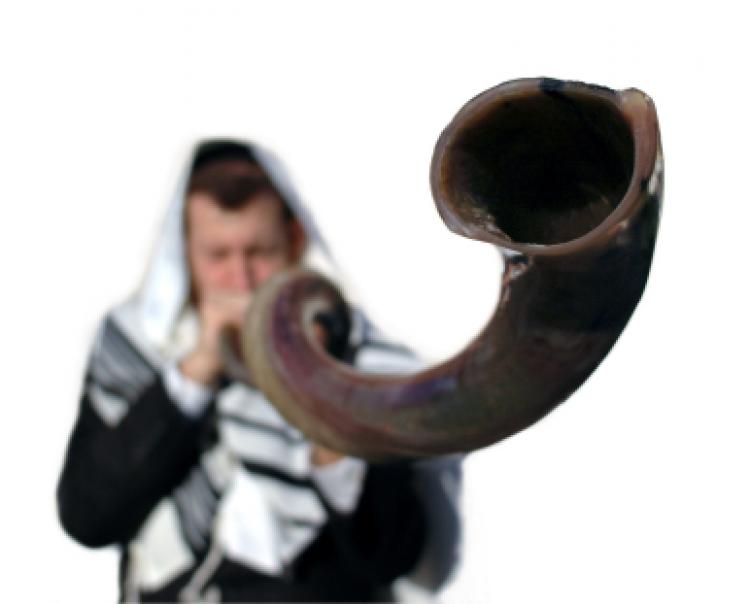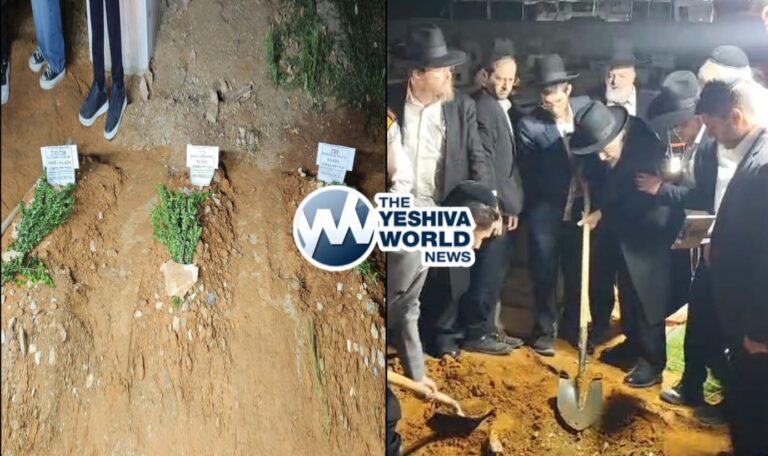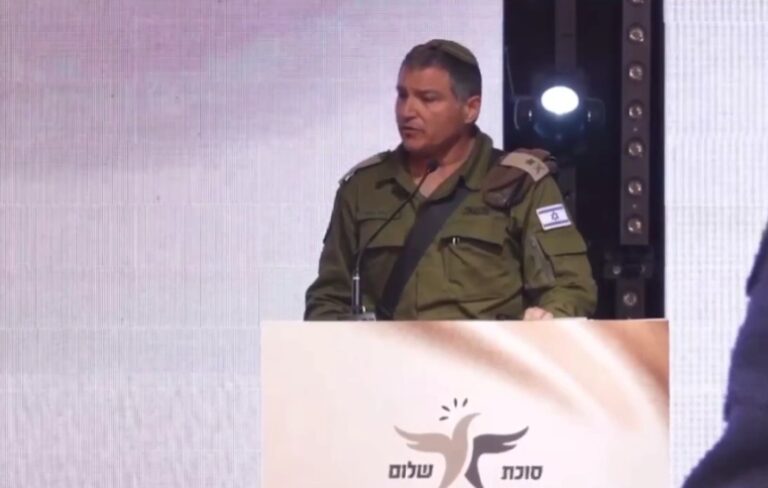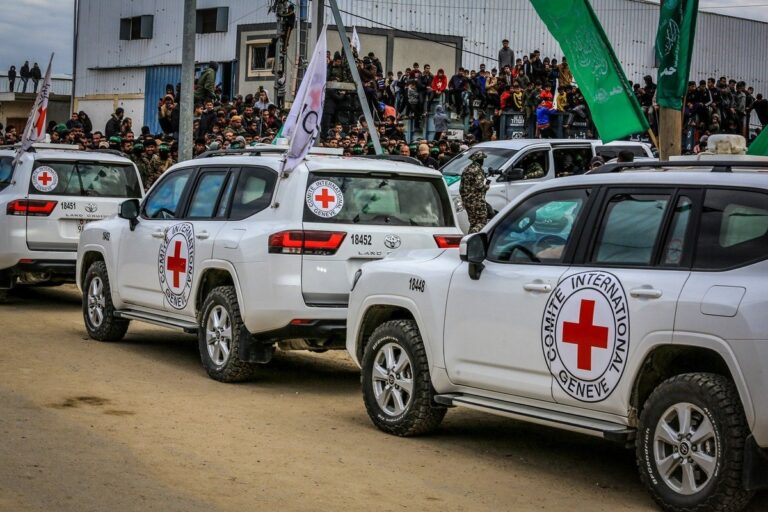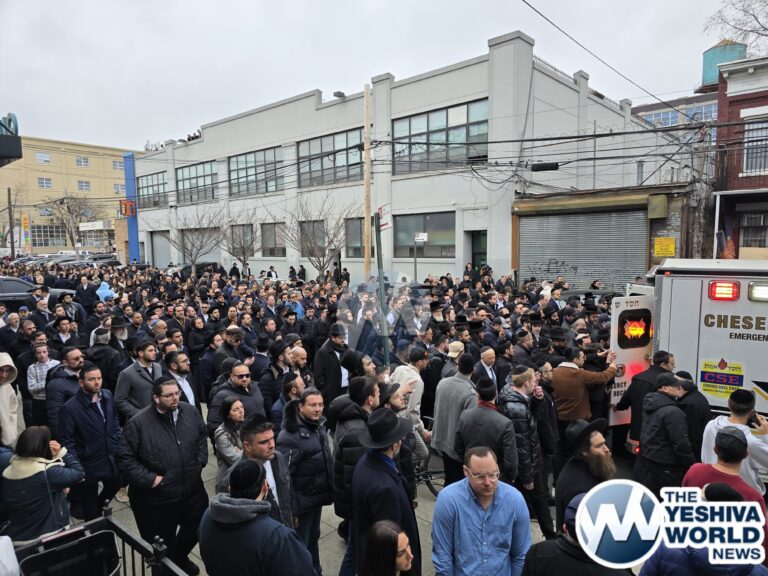By Rabbi Yair Hoffman for 5tjt.com
THE SHLIACH TZIBBUR
- The Shliach Tzibbur that is chosen both for Selichos as well as the Yomim Noraim should have the following six qualities. The qualities are in the following order of preference.
A] Talmid Chochom B] yarei Shomayim C] thirty years old or more D] Married with children E] Sweet Voice F] Merutzah laKahal — desired by and acceptable to the congregation.
- The Baal Tefillah for Slichos should also, ideally, be the Shliach Tzibbur for Shacharis and Mincha. This is to fulfill the principle found in the Jerusalem Talmud (Psachim 10:5) of “HaMaschil B’Mitzvah omrim lo g’mor.”
EREV ROSH HASHANA
- We recite more Slichos on this day than on other days because this day is even more favorable for Hashem forgiving our sins. Many people fast on Erev Rosh HaShana. Some fast only until Mincha. This fast does not need to be declared on the Mincha before it like other fasts.
- After Shacharis, it is important to recite the Hataras Nedarim on Erev Rosh HaShana so that we enter the new year without having the sins of unfulfilled vows. This is done before three knowledgeable men. Husbands should have their wife and daughters in mind when saying it and should say this aloud.
- We do not sound the Shofar on this day for two reasons: 1] To differentiate between the voluntary Shofar blastings of Elul and the mandatory ones for Rosh haShana. 2] We wish to confuse the Satan by not letting him know when Rosh HaShana occurs and thus will be unable to present his charges against us. It is therefore very important that he not get hold of this pamphlet.
- Other things that we do in order to confuse the Satan is not to bentch Rosh Chodesh Tishrei, not to say the words “uvroshei Chodhsaichem takrivu” in the Mussaf of Rosh HaShana, and we do not end the cycle of the reading of the Torah on Rosh haShana either.
- Many have the custom to visit Tzaddikim at the cemetery on Erev Rosh haShana. It is important not to pray to them or to ask them to intercede on our behalf. Rather, we should pray to Hashem that in the merit of the Tzaddik we should have a good judgment.
- It is also a minhag for men to immerse in a Mikvah on Erev Rosh HaShana. The preferred time for this is after the fifth hour of the day (one hour before Chatzos). It is the minhag to get a haircut on this day and put on nice clothing to show our confidence that Hashem will have mercy upon us. One should not wear overly festive clothing so as not to forget the impending awe of Yom HaDin.
- ***Why not subscribe to a weekly parsha newsletter about Emes – written by Rabbi Yair Hoffman. Each week there are four columns having to do with Everyday Emes. Send an email to [email protected] with the word “subscribe” in the subject line.***
THE DIFFERENCES IN THE TEFILLAH
- One of the most important differences between the Shmoneh Esreh of the Aseres Yemei Teshuva (including Rosh haShana and Yom Kippur) is in the blessing of HaKel HaKadosh — the third bracha in the Shmoneh Esreh — we change the world “Kel” to HaMelech HaKadosh. This statement is quoted in the Talmud in the name of the great sage Rav. The reason why we make this change, according to Rashi, is that during this time Hashem demonstrates his Kingship over the entire world by judging them. If one is unsure whether HaMelech HaKadosh was said or not — the assumption is that it was not said — and the Shmoneh Esreh must be repeated.
- On weekdays, when we generally say melech ohaiv tzedaka uMishpat — we change this to HaMelech HaMishpat. If HaMelech HaKadosh was not said and he or she did not yet begin the next bracha — one may recite hamelech hakadosh and continue in the Shmoneh Esreh. This is because the newer version was the one that is considered correct. If, however, more than 3 seconds had elapsed the correction did not count and the entire Shmoneh Esreh must be recited again. It is a good idea to insert a tissue or stick on arrow in one’s siddur on account of this. If one erred in regard to HaMelech haMishpat then one does not have to repeat the Shmoneh Esreh.
- The Gaonim who lived after the time of the Gemorah initiated certain additions to be made into the Shmoneh Esreh during the Aseres Yemei Teshuvah— beyond the changes mentioned in the Gemorah. They added the recitation of certain phrases. “Zachreinu LeChaim – Remember us for life — O’ King who is Desirous of Life and Write us in the Book of Life” is inserted in the first bracha of the Shmoneh Esreh. Mi Chamocha is inserted in the second bracha. “Uchesov l’chaim tovim kol bnei baisecha,” is said in the bracha of Modim and B’sefer chaim is inserted at the end of the 19th bracha of the Shmoneh Esreh.
- In the Kaddishes that are recited during the aseres yemei Teshuva the words l’aiyla ul’aiyla mikol birchasa are said instead of l’aiyla min kol birchasa. The number of words in the Kaddish must equal 28 words, according to the Zohar. Hashem’s name also has 28 words. This is why we combine the two words min kol to mikol when we add the word l’aiylah.
- On Friday evenings after the Shmoneh Esreh we generally say the Tefilah of Magain Avos. In this Tefillah as well we replace HaKel HaKadosh with HaMelech HaKadosh.
- The Poskim have ruled that on the Yomim Noraim we Daven slightly louder than we do during the rest of the year. One must, nonetheless, be careful that this ruling not be a source of Machlokes – argument. It is better to Daven in a more quiet tone if it will cause someone to be disturbed or distressed — Heaven forbid.
- We recite the Avinu Malkeinu on Rosh haShana and throughout the Aseres yemei Teshuvah, a Tefillah that was composed by Rabbi Akiva. It is recited during Shacharis and Mincha — but it is not recited on Shabbos.
- After Maariv during Rosh HaShana the Chazan recites each posuk of L’Dovid Mizmor. The congregation repeats each verse after the Chazzan.
- After Maariv, each person extends a greeting to friends and family. The general greeting as cited by the Chofetz Chaim is, L’shana Tova tekasaiv v’saichasem l’alter, ul’chaim tovim ul’shalom. This is not said during the daytime, however, because the Tzaddikim are inscribed in the morning. We want to treat everyone as if they were already inscribed — a worthy action that helps both ourselves as well as others. This too, when said with the proper intent can be a fulfillment of VeAhavta l’ayacha kamocha — a biblical Mitzvah.
ROSH HASHANA
- Rosh HaShana is the day in which the creation of the world is celebrated. In actuality, however, it is the day that mankind was created (See Talmud Rosh haShana 10b). The world was created six days earlier on the 25th of Elul.
- It was on this day that Adam HaRishon, the first man, was created. On this day he also sinned. And on this day he was granted amnesty, or forgiveness. Because of this, the day of Rosh haShana became the day in which all mankind is judged.
- Rosh HaShana is referred to in the Torah only as Yom HaZikaron, or as Yom Teruah – the name Rosh HaShana is not found in the Torah. Yom HaZikaron means the Day of Remembrance and Yom Teruah means the day of Sounding the Shofar.
- Rosh HaShana plays a central role in our lives as well as that of the entire world. It is a day that we mark with intense prayer. What do we pray for? We long for the time when the entire world will recognize Hashem, and his Divine Plan for the world. This longing helps change our perspectives.
- In the evening, right after the Maariv prayers and after we extend greetings to friends and family, we come home and eat the Seudah. However, it is the custom to recite the special Yehi Ratzons found in the siddur as a good omen and sign for the upcoming year. This is based upon the Talmud that states, “Simana Milsa — omens are significant” (Horios 12a). Another Gemorah (Krisus) tells us to eat certain foods on Rosh haShana in order to have these good signs.
- Some also have the Minhag not to eat walnuts (Egoz) on Rosh haShana. There are three reasons cited for this 1] Because it increases phlegm 2] Because it has the same Gematria as the word Chait — sin. Egoz is 17 and ches tes is 17. 3] The Chsam Sofer writes that the word Egoz alludes to the exiles of Israel.
- The two days of Rosh HaShana are also called a Yoma Arichta – one long day — a single period of time and holiness. This was an enactment of the sages out of a concern as to when the witnesses testifying to the new moon would arrive. Because of this status, there is a debate as to whether we recite a Shehecheyanu on the second night of Rosh haShana. To avoid doubt, we try to purchase a new fruit or garment that would require a Shehecheyanu to be recited regardless. In the past decade the availability of new fruit in this country as expanded rapidly. It is thus rare to be able to recite a Shehecheyanu on a new fruit. One should therefore rely on the clothing option. If neither are available a Shehecheyanu is still recited.
- One should arise on time to Davening on Rosh haShana. There is a Talmud Yerushalmi that states, “One who sleeps on Rosh haShana — his Mazal will also sleep.”
- The main special Mitzvah of this day is the sounding of the Shofar. The Rambam writes that the shofar tells us:
- “Awaken from your sleep, you sleeper! Think about your deeds. Remember Hashem and go back to Him in Teshuvah. Don’t be like those who miss everything that is real and important and instead chase after things that are just a shadow. Don’t waste your years chasing after vain things that won’t help you. Look to your souls and consider your actions. “
- It is a positive Mitzvah in the Torah to hear the blast of the Shofar on account of the verse, “Yom Truah yiheheh Lachem.” We also learn from this verse that the Mitzvah is during the day. The earliest time one may fulfill this Mitzvah is after alos haShachar — dawn. Ideally, however, it should be done after sunrise.
- Nowadays, we blow shofar after Shacharis. Originally, we blew it during Shacharis because of the principal of Zrizim makdimim l’Mitzvos. Why then did we change? According to the Gemorah (Rosh HaShana 32b), we changed during Roman times because of a decree. Accordng to the Yerushalmi the enemies thought that the Shofar was a battle cry — a call for a rebellion and they killed Jews. Even though this is no longer applicable — the Gemorah states that we do not change back.
- The sages enacted that when Rosh haShana falls on Shabbos the Shofar is not to be blown. They ruled in this manner so that someone will not come to carry a Shofar by accident. This is a lesson in how seriously we should be concerned about the issues of carrying on Shabbos — the sages were so concerned that they repealed a Torah Mitzvah!
- The Gemorah tells us that any year in which the Shofar is not blown ends up as a calamitous year. What about Shabbos then? Rabbi Aharon Kotler explains that the merit of Shabbos observance — in having given up the item that will silence the Satan — will serve to silence him.
- The Gemorah tells us that one set of Shofar blasts is to fulfill the Mitzvah, while the other set of shofar blasts is to confound or confuse the Satan. Rashi explains that the Satan will be unable to prosecute us when he sees us lovingly perform Hashem’s Mitzvah again. Tosfos explains that the Satan is afraid that he will lose his job, thinking that this shofar blast is the one that hails the arrival of the Messianic era. One may ask how it is that the Satan can be confounded and confused so easily? The Taamei haMinhagim explains that the Satan is concerned that the Jewish people are not just doing Teshuvah. He is worried that they are doing Teshuva m”Ahavah — repentance out of Love of Hashem. When that happens all the Aveiros that the Jewish people performed are turned into Mitzvos. This is what worries and confuses him!
- Some shuls have the custom to break for Kiddush and a snack before the blowing of the shofar. This is controversial because many authorities forbid eating before any Mitzvah of the day. Because Mussaf ends late, however, many shuls are lenient. Nonetheless, a full meal should not be eaten — they should only eat enough to help them focus on the Mitzvah further.
- Women are technically exempt from the Mitzvah of Shofar because it is a time-bound Mitzvah. Nonetheless, if they hear the Shofar it is counted as the fulfillment of a Mitzvah. For this reason Ashkenazic women may recite the blessing. A child is obligated in hearing the Shofar by Rabbinic decree.
- Two blessings are recited on the Shofar. “Asher kid’shanu b’mitzvosav v’tzivanu lishmoah kol shofar,” and the Shehecheyanu. The brachos should be said while standing.
- A shofar may only be made from a Tahor or pure animal. Ideally, a ram’s horn should be used, alluding both to the merit of Akeidas Yitzchok and to the eventual ram’s horn of Moshiach. The word Shofar means “hollowed tube.” Therefore a horn which is not naturally hollow but was hollowed by man is not called a Shofar. A deerhorn or oxhorn is called a Keren by the Torah and therefore are also invalid — even though they are hollow.
- If a shofar has a hole or a crack it may have become invalid. The shofar should be presented to a Rav who is proficient in these laws to rule upon it.
- The shofar blasts are divided into two types — the sitting blasts Tekios d’meyushav (although our custom now is to stand for them too) which are blown before Mussaf
- And the standing blasts — T’kiyos d’meumad which are blown during and after Mussaf.
- There should not be any talking from the time the blessing is recited until the last blast of the Shofar. If one did speak and at least one set of blasts was heard — the blessing does not have to be recited again.
- The Shofar is blown from the Shulchan and not the Amud. The reason is to remind the heavenly court of the merit of our Torah study.
- The Shofar is blown from the right side of the mouth. If this is difficult for the blower, the baal tokeah, then may switch sides.
- The Torah mentions the word Truah three times. The Chachomim derive from here that three truahs must be sounded on Rosh HaShana. We also have a tradition that each Truah must be preceded and followed by a Tkiyah. We must therefore hear at least 9 different blasts. However, our sages were unsure as to whether Truah means wailing, sobbing, or both. Therefore we make all types of sounds to ensure that we have fulfilled the Mitzvah.
- Rav Saadya Gaon lists ten reasons why the Shofar is blown — other than the fact that it is a Mitzvah in the Torah.
1] Kings are enthroned with trumpet blasts. We are enthroning Hashem as King of the Universe.
2] The Shofar sound is a call for us to do teshuvah.
3] It reminds us of Har Sinai — where a Shofar blast was heard throughout the camp. We commited ourselves then to Naaseh v’nishmah — which we should do now too.
4] It reminds us of the mussar, the chastisement, of the prophets which is described as like a Shofar in Sefer Yeshaya chapter 58 and Sefer Yechezkel chapter 33 as “like a Shofar.”
5] It reminds us of the destruction of the Bais HaMikdash and arouses us to pray for its rebuilding.
6] It reminds us of Akeidas Yitzchok — and arouses within us thoughts of commitment and self-sacrifice to Hashem — something that will help us in judgment.
7] The sobbing instills Yiras Shamayim into us.
8] It reminds us of the final Day of Judgement.
9] It reminds us of Kibutz Galios — when all exiled Jews will return.
10] It reminds us of Tchias HaMaisim.
- The daytime Kiddush of Rosh haShana is the recitation of the verse, Tiku bachodesh shofar bakeseh leyom chageinu etc. Then a Borei Pri haGafen is recited on wine. As in all Kiddush a mezonos must be eaten or one is not permitted to taste anything.
SHACHARIS
- When the Shliach Tzibbur begins Shacharis after Psukei D’Zimra, he sings a long traditional tune while he is still standing at his regular seat. Then he recites the word “HaMelech” aloud and walks up to the Amud, where he will continue leading the prayers. The Sefer HaChaim explains that, just as a robbery victim overcome by robbers will shout out to police when he sees them, so too do we shout out to the king when we are overcome by accusers.
- After Shacharis, as mentioned earlier, we recite the Avinu Malkeinu that was composed by Rabbi Akiva. The Gemorah tells us that Rabbi Akiva’s prayer was effective when other prayers were not only because of a remarkable quality that Rabbi Akiva possessed — He was maavir al midosav — forgiving toward others. One of the reasons why this prayer should be said is to remind us to emulate the qualities of its author.
TORAH READING
- The Zohar tells us that when we open the Aron in preparation for the reading of the Torah — it is a special Ais Ratzon — a time of remarkable receptivity for prayers. Normally we say the prayer Brich Shmay during this time. On Rosh haShana we add the 13 midos of compassion as well. We also add the word VeNorah in the middle of Echad Elokainu, Gadol Adonainu, Kadosh _____ shmo.”
- The reading of the first day on Rosh haShana is the story of the birth of Yitzchok. One of the reasons that we read this section is to highlight the idea that Hashem pays particular attention to answer prayers said in deep anguish and said in earnest. Sarah Imeinu’s Tefilos were recited in this manner. Yitzchok was also conceived on Rosh haShana. On the second day we read of the Akeidah.
MUSSAF
- The Mussaf Tefillah contains three main sections called, “Malchios, Zichronos and Shofros. Each section contains ten psukim — 3 from the Torah, 3 from the neviim, 3 from ksuvim and 1 more from the Torah. The Malchios section contains verses that declare hashem’s Kingship. The Zichronos section contains psukim that describe how hashem remembers all of our deeds. The Shofros section contains Psukim that proclaim Hashem’s glory, the removal of wickedness and the merits of Klal Yisroel.
- We also have the custom to blast the Shofar 100 times over Rosh haShana. We do three series of thirty and one last one of ten.
ROSH HASHANA AFTERNOON
- Ideally one should not sleep on Rosh HaShana afternoon on account of the aforementioned Yerushalmi. If need be, however, one can rely on those authorities who understand the Yerushalmi as referring to times of prayer and the time to hear the shofar.
- On the afternoon of the first day of Rosh haShana many people have the custom to recite the Tashlich service at a body of water. Ideally the body of water should contain fish. If the first day of Rosh haShana comes out on a Shabbos, Tashlich is delayed until the afternoon of the second day of Rosh haShana. If one is unable to do it the Tashlich may be said until Hoshana Rabbah.
THE TEN DAYS OF REPENTANCE
- Hashem, in His Infinite Kindness has given us a gift in the Aseres Yemei Teshuva. How so? Not everyone, unfortunately, merited to receive a judgment on Rosh HaShana. Some people, have their spiritual report card pushed off. The Talmud Yerushalmi explains that the bainonim — the average people, are judged during these ten days of Bein Keseh L’Asor. If the average person successfully repents — then they are inscribed with the Tzaddikim in the book of Life. Indeed, even the Rashaim, although they are written down negatively, it is not sealed until Yom Kippur and that fate can be changed. The gift is that everyone receives a second chance.
- The phrase “Bein Keseh L’Asor” is used to refer to the days between Rosh haShana, when the moon is covered, to the tenth of the month — Yom Kippur. These ten days give all people the opportunity to make amends and correct their sins. Hashem comes closer to us and makes it easier to make those changes. The Talmud (Yevamos) understands the verse, “Dirshu hashem Behimatzo — seek Hashem where He may be found” (Yishayahu 55:6) as referring to the Ten Days of Repentance.
- We find that these Ten Days have significance in other places too. Chazal also tell us that Hashem did not immediately punish Nahval, the first husband of Avigayil, for the sins he committed against Dovid HaMelech, and for his tremendous inhospitality. Nahval deserved immediate punishment for this mistreatment. But Hashem did not inflict it then. Rather, Hashem gave Nahval the opportunity to do Teshuvah during the Aseres Yemei Teshuvah. We see here the enormous power that these ten days possess.
- In fact, the Midrash called “Yalkut Shimoni” tells us that the Anshei Knesses HaGedolah incorporated the ten verses of malchios, zichronos, and shofros in the Mussaf of Rosh haShana to correspond to the ten days of Teshuvah — this is how important these days are.
- The Shla explains that each day of the Aseres Yemei Teshuvah is progressively more and more urgent. Action should be taken in both areas of Mitzvos Bain Adam L’Makom andBain Adam l’Chaveiro and all three tools should be utilized, Teshuvah, Tzedakah, and Tefillah.
- There are seven days that are in between the two days of Rosh haShana and the one day of Yom Kippur. The Seforim HaKedoshim explain that during each of these seven days, Sunday through Shabbos, it is possible to do Teshuvah for every Sunday that we sinned throughout the year 0n that corresponding day of the 7 days. So on Tuesday of the Aseres Yemei Teshuvah, we can atone for every Tuesday in that year.
OUR ROLE
- The nation of Israel was given a special role in Hashem’s Master Plan for the world. Up until now, we have only partially fulfilled this Plan —of being a nation of priests, bringing knowledge of Hashem to the world. Indeed, the davening on Rosh HaShana emphasized the hope and dream when all the nations would form one Agudah to do His Will. The Torah commands us to make sure that we not forget this special role, and even provided us with special Mitzvos to make sure that our role not be lost. The Mishna in tractate Avodah Zarah tells us that the Rabbis forbade a number of items that were made or owned by the surrounding gentiles. Their concern was of the possibility of intermarriage, and of losing the special destiny that G-d has planned for us. One of the items mentioned in the Mishna is bread produced by gentiles.
ONLY PAS YISROEL
- During the Aseres Yemei Teshuvah it is our custom not to eat what is called “Pas Palter — Baker’s bread.” This refers to bread or flour items that were baked under non-Jewish ownership. Regular Kosher bread, cakes, pretzels, cookies and ice cream sandwiches are not to be eaten during this time. It may only be eaten if the words “Pas Yisroel” appear on the supervision.
- There are a few reasons for this stringency. One reason, according to the Tur, is that during these days we try to fulfill all our Mitzvos, both Torah and Rabbinic Mitzvos, in the most pure and ideal manner possible. How is Pas Yisroel more ideal? In the past, the sages forbade us from eating all bread and mezonos items that were baked by non-Jews. However, this prohibition was partially repealed by the Rabbis because the majority of our people were unable to adhere to this stricter ruling. However, during the Aseres Yemei Teshuva (and according to the Mishna Brurah on Shabbos too) we avoid eating Pas Palter.
- Another reason for this stringency, according to the Levush, is to serve as a reminder of how unique these days are. A third reason, according to the Chayei Adam, is that we are asking Hashem not to be strict according to the law — just as we are doing something extra that is not strictly required of us, we ask Hashem not to be strict with us.
TZOM GEDALIAH
- Immediately after Rosh haShana we observe Tzom Gedaliah. The Gemorah (Rosh haShana 18b) explains that the death of Tzaddikim is likened to the destruction of the Bais HaMikdash itself. Gedaliah was the last hope of the Jewish people to retain some form of autonomy and self-rule. Gedaliah was actually murdered on Rosh haShana itself. However, it was pushed off until after Rosh haShana in order to observe the day properly. The murder of Gedaliah is particularly vexing because a] He was a Tzaddik and Navi b] This murder was rachmana litzlan done by a Jew and c] Klal Yisroel suffered many additional tzaros because of his death.
- Only boys 13 and above and girls 12 and above must fast. Rav Shlom Zalman Auerbach zt”l (Halichos Shlomo) holds that there is no Chinuch for fasting on Rabbinic fast days. If a child does wish to fast he must ask the permission of his parents and it must not affect his learning. Nonetheless, those who are not fasting should not have sweets, candy, ice cream or between meal snacks (See Mishna Brurah 550:5 and Chayei Adam 133:6).
- If Rosh HaShana falls on a Thursday and Friday as in 2011, 2013, and 2014, Tzom Gedaliah is pushed off until Sunday. Since it is pushed off — at a Bris the father, mohel and Sandek may eat after Mincha time. At a Pidyon HaBen, the father and the Kohain may eat after Mincha too.
- In the Avinu Malkeinu, there are usually two columns indicating two different versions to recite — one for the Ten Days of Repentance and one for Fast Days. On Tzom Gedaliah, the Aseres Yemei Teshuvah side is recited – not the column for fast days.
FORGOT IT’S A FAST
- If someone forgot that it was a fast day and ate, they should stop eating as soon as it is remembered that it is a fast day. We do not say that once he or she at, the fast is lost. If a bracha was made on food and then the person remembered that it was a fast day, do not taste the food — rather say, “Boruch Shaim Kvod Malchuso L’olam voEd.”
- A diabetic or other sick person who is told not to fast should make up the fast with charity. The amount should be equivalent to the amount of food one eats in a typical day. If someone has difficulty fasting, but is not sick, that person must still fast. If they do not fast they are Poretz Geder — breaking a fence. The Mateh Ephraim writes that the verse “And their sin shall be on their bones (Yechezkel 32:27)” applies to them.
TEFILOS AND ADDITIONS
- We must take enormous care to make sure that we add the appropriate additions to the Tefilah during the Aseres Yemei Teshuvah. One such addition is the fact that in Shmoneh Esreh we say Oseh HaShalom Bimromav instead of oseh Shalom Bimromav. The Arizal explains that HaShalom in Gematriah is equivalent to the name of the angel in charge of inscribing “Safriel.”
- During the Aseres Yemei Teshuvah we also try to be stringent regarding other Mitzvos too, not just Pas Yisroel. Some people try to purchase their lulavim and esrogim during this time in order to get more Mitzvos. The Seforim say that if someone is not careful to eat Glatt Kosher all year round but just regular Kosher, he or she should keep Glatt Kosher. For this reason, it would also be appropriate to be stringent in Cholov Yisroel during this time — if it is possible. It is not worthwhile, however, to cause a Machlokes over a Chumrah.
The author can be reached at [email protected]
***Why not subscribe to a weekly parsha newsletter about Emes – written by Rabbi Yair Hoffman. Each week there are four columns having to do with Everyday Emes. Send an email to [email protected] with the word “subscribe” in the subject line.***

